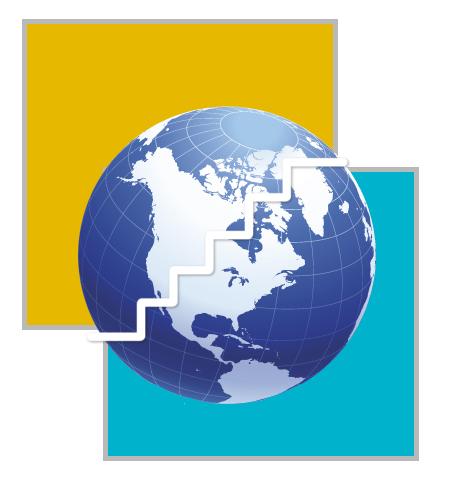MEDIA
A study details the effects on Sri Lanka of the 23-year-old ethnic conflict.
A STUDY by a Mumbai based think-tank, Strategic Foresight Group (SFG), has confirmed what many long feared: Sri Lanka has emerged as the most militarised society in South Asia. More worrying is the conclusion that it could get worse unless urgent action is initiated towards ending the 23-year-old conflict.
The study, "Cost of conflict in Sri Lanka," says the island nation has 8,000 military personnel per one million population. Even Pakistan �€” of which it is said that while every country has an army the Pakistan army has a country �€” has only half that number, 4,000 military personnel per one million population. The figures for other South Asian countries are: Nepal 2,700; India 1,300; and Bangladesh 1,000.
In terms of military expenditure as a percentage of gross domestic product (GDP), too, Sri Lanka spent the most �€” 4.1 per cent. In the case of Pakistan it is 3.5 per cent; 2.5 per cent in the case of India and Nepal; and 1.5 per cent in the case of Bangladesh. The figure cannot be expected to be an accurate representation of the actualities as there is very little information and knowledge about the military expenditure by the LTTE.
"Sri Lanka's defence expenditure as a percentage of its GDP is the largest not only in South Asia but is also higher than other conflict-ridden countries such as Colombia, Myanmar, Sierra Leone, Sudan, the Philippines, and Uganda to name a few," the researchers of the study, Semu Bhatt and Devika Mistry, note. In other words, even among the conflict-afflicted countries there could be very few that have witnessed the level of militarisation seen in Sri Lanka, variously described as "paradise on earth" and "pearl of the Indian Ocean."
The study has established a direct linkage between the ongoing ethnic conflict and the steep rise in defence spending. "Sri Lanka witnessed one of the most dramatic increase in military expenditure from an allocation of 0.5 per cent of the GDP in the 1970s to as high as 6.3 per cent in 2000," the study said. It is supposed to have declined to 4 per cent of the GDP after the 2002 Cease Fire Agreement (CFA) brokered by Norway.
The figures cited in the study pertain to the 2004-05 period. The CFA, which began to come under strain in mid-2003, has now been almost reduced to a piece of paper; the Sri Lankan forces and the Liberation Tigers of Tamil Eelam have been engaged in an intense "undeclared war" in the latest phase for over four months now. It is unlikely that the defence expenditure as a percentage of the GDP for 2005-06 can be contained at the level seen in the period after the CFA.
The strength of the Sri Lankan Army, 15,000 in the early 1970s, is now 1.5 lakh. Its arsenal includes multi-barrel rocket launchers, long range artillery, mortars, battle tanks, and armoured personnel carriers. The Navy is much smaller; it has 20,000 personnel and uses fast attack craft with 23 mm guns, inshore and offshore patrol vessels, landing craft, etc. The Air Force uses Kfir supersonic fighter-bombers, MiG-23s, and choppers, including MI-24s.
The LTTE's estimated strength is 10,000 but this does not reflect its actual capability given its use of suicide bombers and guerrilla tactics. Its navy has about 2,000 personnel. The LTTE has no functioning air force and no anti-aircraft defences but it is said to have acquired two to five small aircraft, and built one or two airfields. The study puts the LTTE's annual expenditure on its cadres and military-oriented networks, both in the island and abroad, in the range of $8 million.
The SFG study says that for the LTTE, which is essentially a military outfit, expenditure on weapons and the maintenance of a war economy gets top priority. "It does precious little for the economic well being of the people under its control, despite running a few social and economic organisations." But given that the outfit's annual income is anywhere between $175 million and $385 million, the expenditure on cadres and the informer networks is "insignificant," the study says.
"The LTTE spends a minimum on its cadres and the maximum on sustaining a war economy and its support base internationally." Of the total income, $100 million to $250 million is believed to come from drug trafficking, although there is yet no direct evidence of the outfit's involvement in this trade. Local taxation and extortion are said to contribute about $30 million; human smuggling and funds siphoned off from NGOs gives $3-5 million; contributions from the Tamil expatriate community fetch $40-50 million; and profits from businesses $35-50 million.
The conflict and the consequent militarisation have meant enormous human suffering in social, economic, and political terms. By 2005-end, 65,000 persons had died. Latest estimates show at least a million have been displaced, 2.25 lakh in the current phase of hostilities since April. Life is subject to never ending checkpoints and security drills. Current inflation hovers around 15 per cent and the struggle goes on.
In the words of SFG researchers, "The possibility of it [Sri Lanka] becoming less militarised nation lies only after 2011, conditional on the resolution of internal conflict before 2006-07." Is anyone out there listening?
http://www.hindu.com/2006/09/27/stories/2006092708021100.htm





